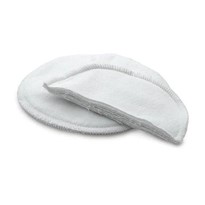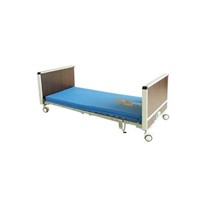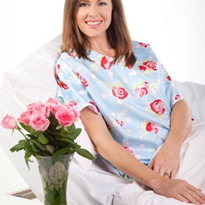Simulation helps nursing and midwifery graduates get ready for the workplace
The Faculty of Nursing, Midwifery and Health (NMH) at the University of Technology, Sydney has an international reputation for providing innovative and practice-oriented programs in nursing and midwifery, as well as health services management. Their courses place a high value on evidence-based practice and as a result, often lead the way in Australian health care education.
Simulation technologies were first introduced into UTS in 2006 after faculty lecturer Michelle Kelly used her 2005 sabbatical to embark upon a series of visits to leading simulation teaching and learning facilities in several countries.
Following her return to UTS, and armed with a cache of newly acquired expertise, Michelle sought faculty management support and initiated the introduction of simulation technologies into the NMH curricula. With substantial investment from both UTS and NMH, students can learn in state-of-the-art clinical practice and simulation laboratories.
Workplace ready students
In the space of just five years, Michelle has led the Faculty into a revolutionary era where immersive simulation technologies are now incorporated into each year of the new Bachelor of Nursing curricula. Many staff have embraced and incorporated this new learning approach to transform teaching and student experiences.
In her current role as Director of Simulation and Technologies, Michelle reports that simulators and simulation technologies have played an important role in sustaining the university’s commitment to producing workplace ready students.
One major way that this is achieved is through a strong emphasis on how to engage with the patient and patient safety; "Through the use of simulation learning experiences our students are able to acquire essential clinical practice skills in a safe and realistic simulated setting. Not only does this build student confidence, but it also exposes students to best practice scenarios," she said.
This commitment is certainly evident within the Faculty’s facilities – including four state-of-the-art nursing and midwifery labs at the City campus and a simulation lab at the Kuring-gai campus, all of which are fully equipped for high fidelity simulation of a range of clinical scenarios.
Adjacent to the labs is a series of control rooms which allow teaching or technical staff to remotely alter simulated patient states, observe students’ responses and digitally record activities via ceiling cameras and microphones. Once recorded, this footage can be used to monitor students’ skills, and to provide specific feedback during allocated debriefing sessions.
Accelerated learning
Michelle reports that recent advances in simulator technology have really ‘ramped up’ the learning experience, especially with the latest additions of audio visual recordings.
In addition to creating realistic lab scenarios, Michelle says that the Faculty regularly trains its lab technicians in moulage (the art of applying mock injuries). "We quite often get the technicians to prepare the manikins in a way that closely resembles that of a trauma or burns patient.
Third year critical care nursing students are usually very surprised and impressed with how life-like the manikins appear and how realistic their responses are," she said. Midwifery academics are very adept at creating realistic, simulated birthing experiences for student midwives, including post partum situations or complications.
Active student participation
As a glowing testament to the use of simulation technology in this field, Michelle is supporting a team to prepare the upcoming launch\ of Simulation Week for first year nursing students, which will see 350 participants taking part in interactive simulation experiences. An event of this scale is clearly a mammoth undertaking, and one that has taken a lot of forethought, teamwork and preparation.
Of course, introducing new technologies to any established work environment isn’t all that easy either, and Michelle admits that some participants need more enticement to engage with the simulation technology: "Many experienced nurses who return to study require more encouragement to interact with the simulators, and initially say things like, ‘they’re not real – it’s not like real clinical practice’. But once they see what the manikins can do, they are really impressed, especially when the ‘patient’ speaks and they can assess many physiological parameters," she said.
Michelle observes that using simulation technology is a beneficial activity for a diverse array of students, from recent school leavers through to international students who need to acquire Australian qualifications: "Active participant learning activities are very powerful, and when used in conjunction with facilitated debriefing and reflection, the outcomes of using sim technology appear to be superior and certainly more memorable, compared with other ways of learning," she said.














